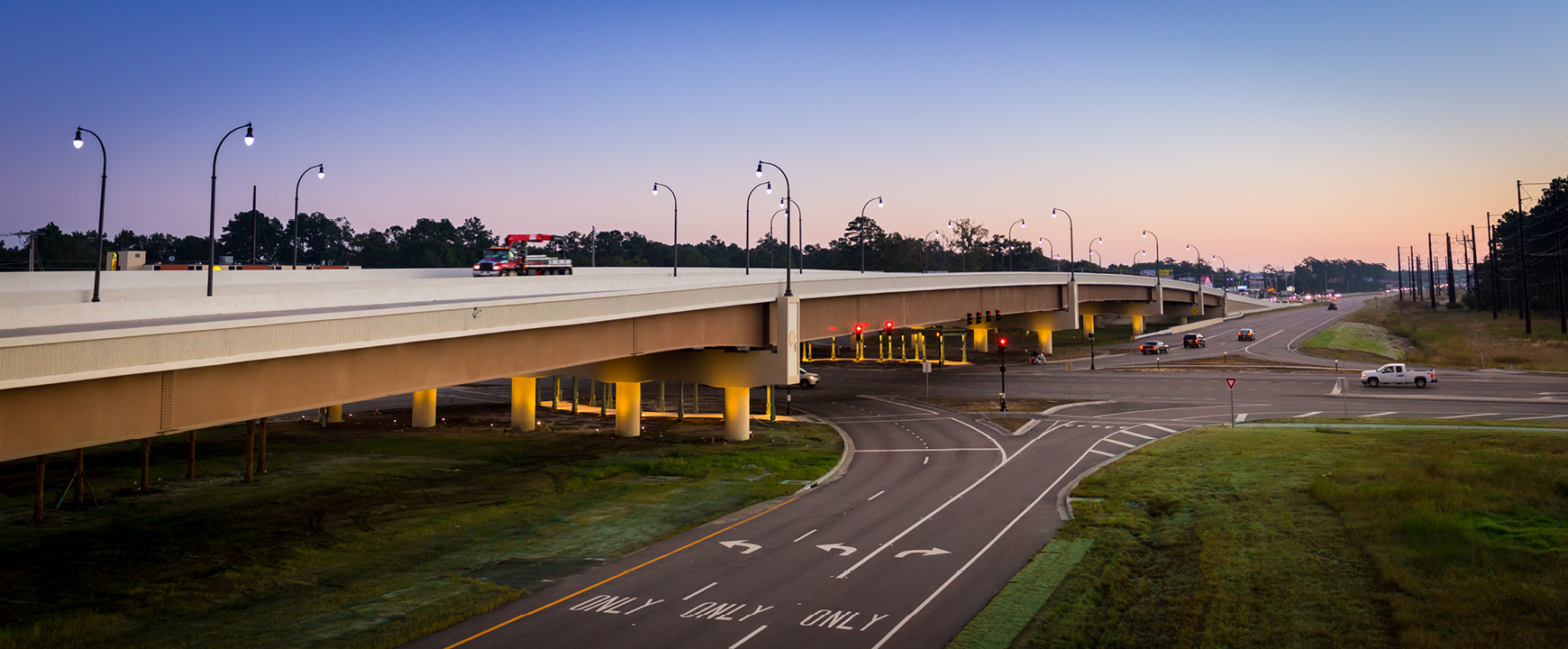News
Innovative Geotechnical Solution Helps Open Crucial South Carolina Interchange
Jul 13, 2015

STV, a leading transportation design firm, redesigned the $120 million US 17 Bypass at SC 707/Farrow Parkway interchange in Myrtle Beach, SC, replacing the at-grade intersection with dual 1,250-foot-long bridges, and overcoming a number of geotechnical engineering challenges.
The interchange, known regionally as the “back gate” at the site of the former Myrtle Beach Air Force Base, is a key access way to Market Commons, a mixed-use development. STV, and its team of subconsultants was contracted by Horry County and the South Carolina Department of Transportation (SCDOT) to provide complete turnkey services. This included project management, environmental documentation, permitting, traffic analysis, roadway and bridge design, utility coordination, hydraulic analysis, and geotechnical investigations
“The goal of the project was to provide uninterrupted traffic flow and improve roadway access at this key chokepoint within Myrtle Beach, a major tourism center in South Carolina,” said Richard Capps, P.E., STV senior vice president and regional manager for the firm’s Transportation & Infrastructure Division Southeast Region. “We worked closely with our clients and our business partners to overcome some unique challenges and successfully deliver a brand new ‘back gate’ at US 17 Bypass and SC 707/Farrow Parkway.”
Due to the project’s proximity to the South Carolina coast, poor-bearing soils required geotechnical modifications to support the structure, roadway, walls, and drainage features. The project team collaborated with SCDOT to develop three innovative solutions for this issue. Prefabricated vertical drains were used to expedite settlement time on all ramp and bridge approach roadways. Lightweight aggregate borrow was deployed around single-, double-, and triple-phase mechanically stabilized earth walls to decrease settlement time and produce adequate soil-bearing capacity. Deep soil cement mixing was used in isolated adjacent areas, strengthening the soil and allowing construction to proceed swiftly while maintaining a viable traffic control plan.
The traffic control plan enabled the geotechnical work to proceed, while isolating adjacent areas and allowing traffic to move freely. Additionally, since the project area is located near one of the most active earthquake zones on the east coast, numerous seismic issues were addressed during the design phase.
The interchange officially opened to motorists last October with additional work, including landscaping expected to wrap up later this summer.
For more information, contact:
Jill Bonamusa
(212) 614-3354
jill.bonamusa@stvinc.com
Mark Ginocchio
(212) 505-4916
mark.ginocchio@stvinc.com
